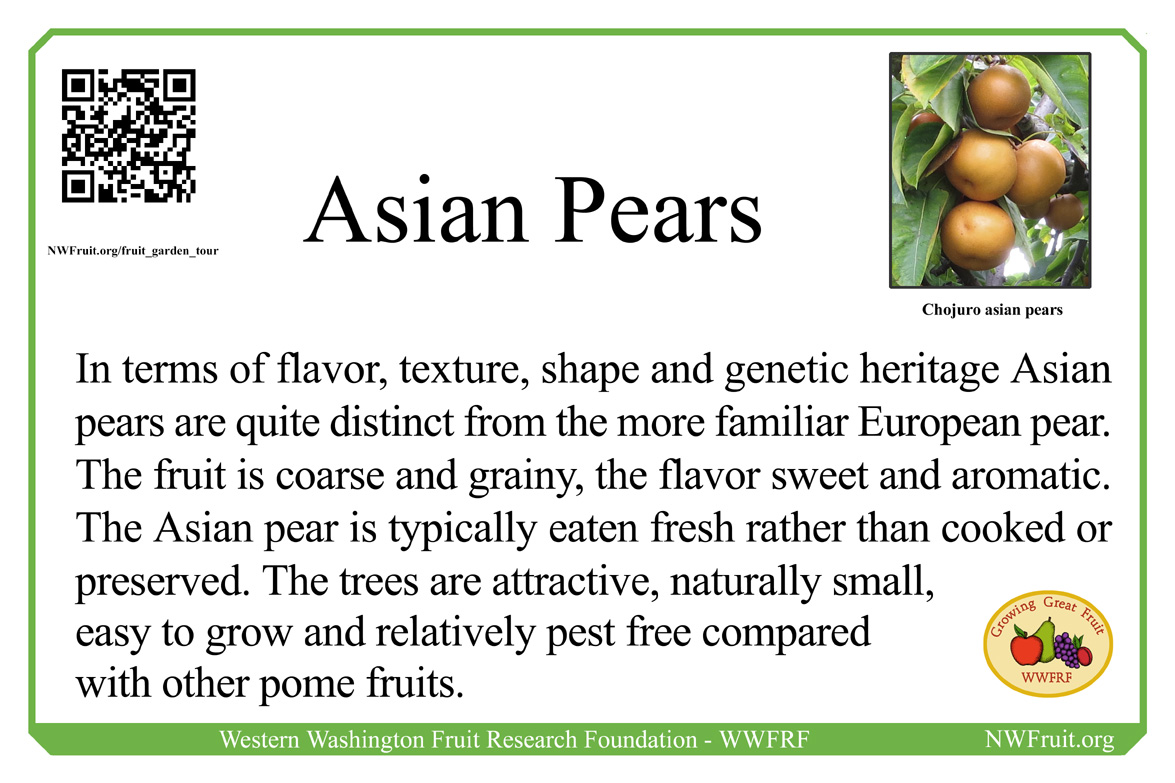About Asian Pears
(Pyrus pyrifolia) The fruiting trees known as Asian Pears are native to East Asia. Asian Pears are usually round and have a delicious crispy flesh. Because of this, they are sometimes mistakenly called an “Apple Pear”. They have either yellow skin or russeted skin. The yellow skin varieties have thin skin and have a milder flavor. The russeted selections tend to have thicker skin and often a butterscotch like flavor.
Select two varieties for pollination. They have a more spreading habit than European Pears. They can be maintained at 10 to 15 feet tall. Plant 15 feet apart. If allowed to bear heavily when young, they can stop producing vegetative growth. Thinning of fruit is critical to increase fruit size or they tend to produce a heavy crop of golf ball size fruit. Regular watering of the ground for a month or so when they are ripening, make for much larger and juicier fruit. They tend to overbear with lots of fruit produced on the ends of the branches which bends the branches down. Avoid this by summer pruning and thinning the fruit. Asian Pears can be somewhat dwarfed on Old Home X Farmingdale rootstocks. They grow larger when grown on Pyrus Betulaefolia and Pyrus Calleryana rootstock.
Knox Nomura is the nurseryman from the Sumner area, responsible for introducing many of the best Asian pears for our climate to Western Washington. In Japan, the Asian pear is highly prized for its large size, round apple-like shape, delicacy and sweetness. Their large size makes them an extravagance to eat, so they are regarded as a treat or given away as gifts. Asian Pears are best eaten fresh, out of hand or eaten after chilled in the refrigerator. The skin on russetted skinned cultivars can be thick and flavor is best if they are peeled. Their sugary juice can serve as vinegar-making stock or as a substitute for simple syrup. Asian Pears are delicious when dehydrated. High in water content, they do not make a good cider or juice.


